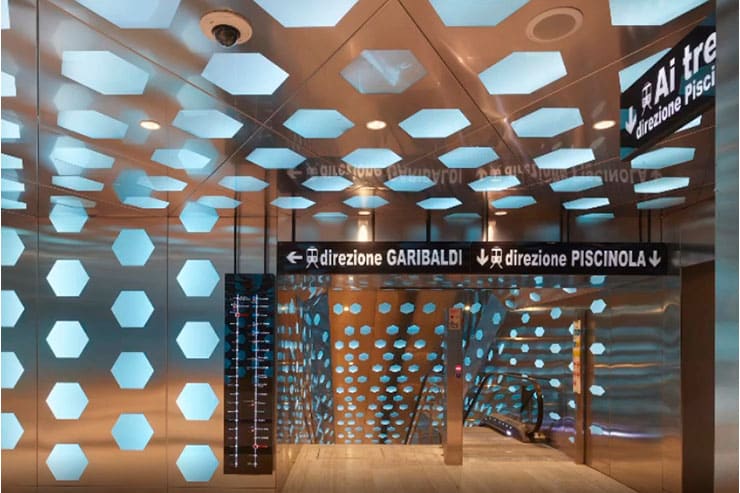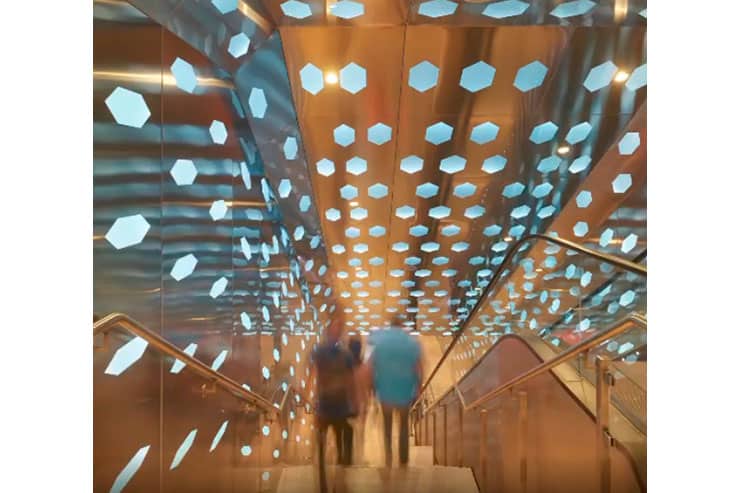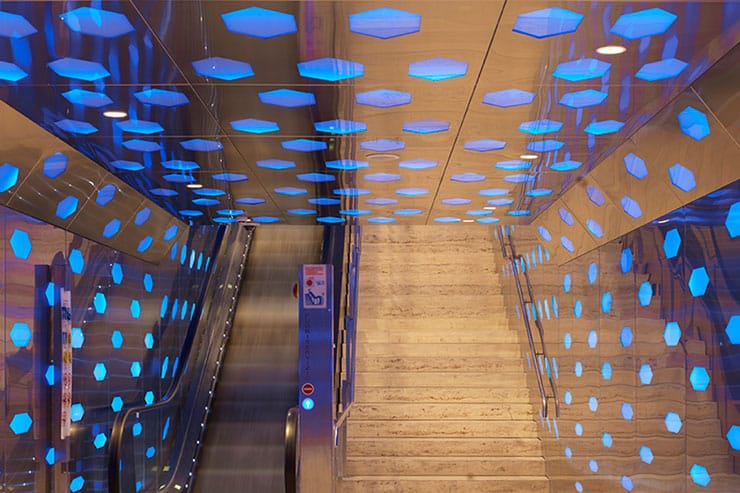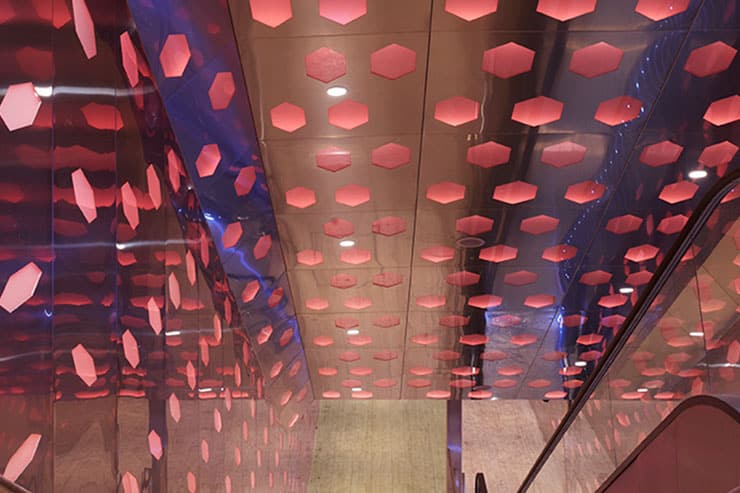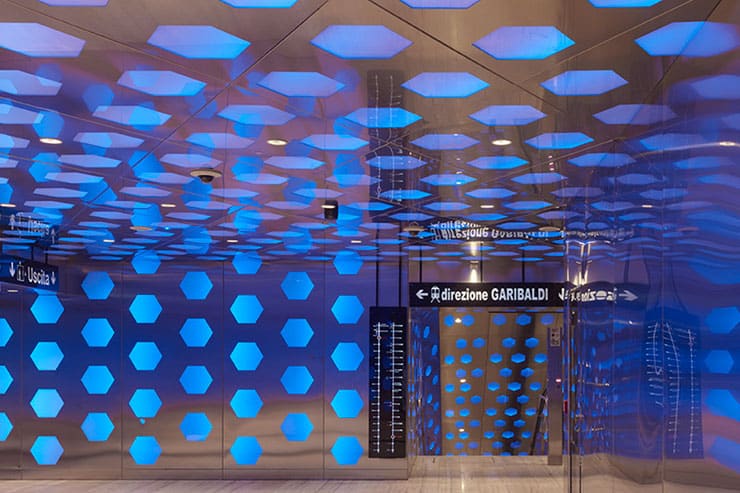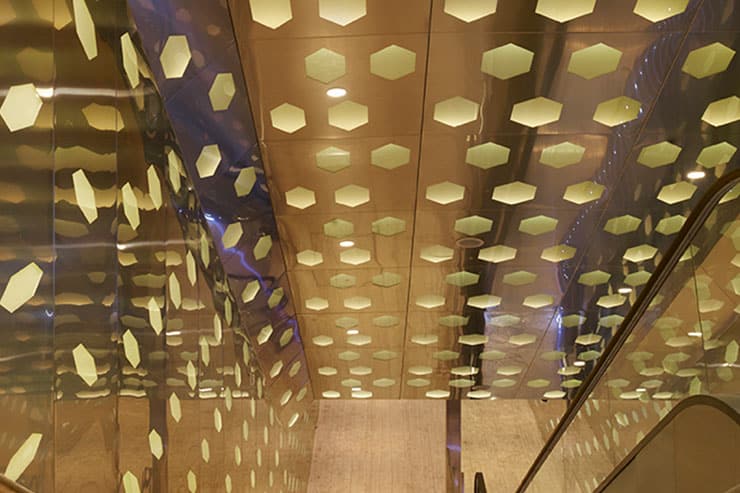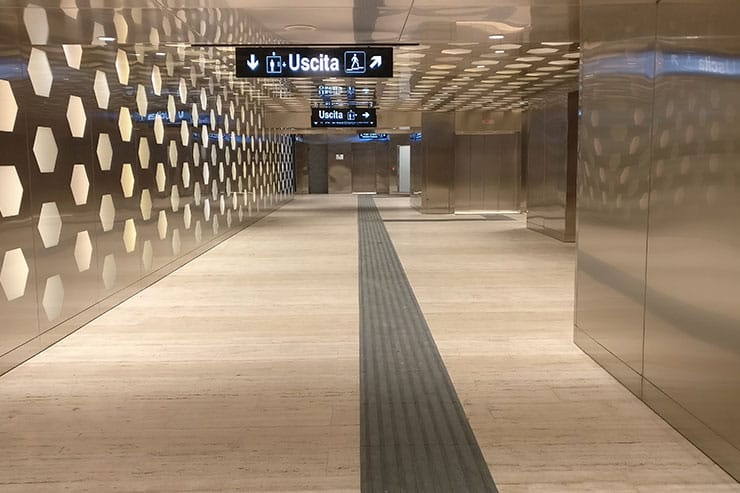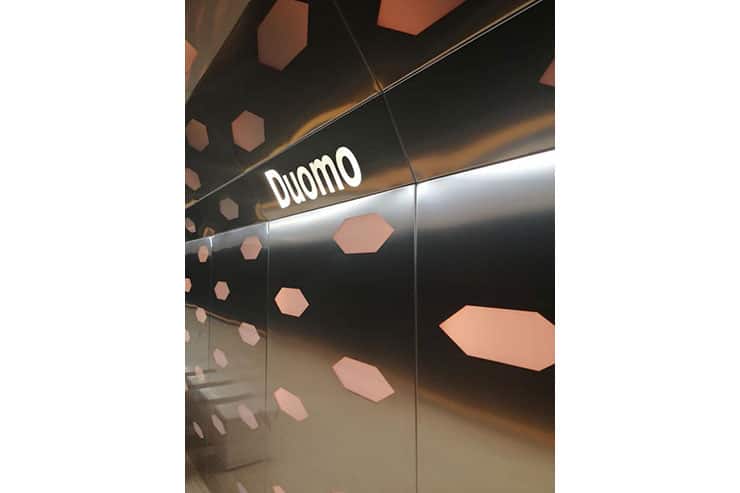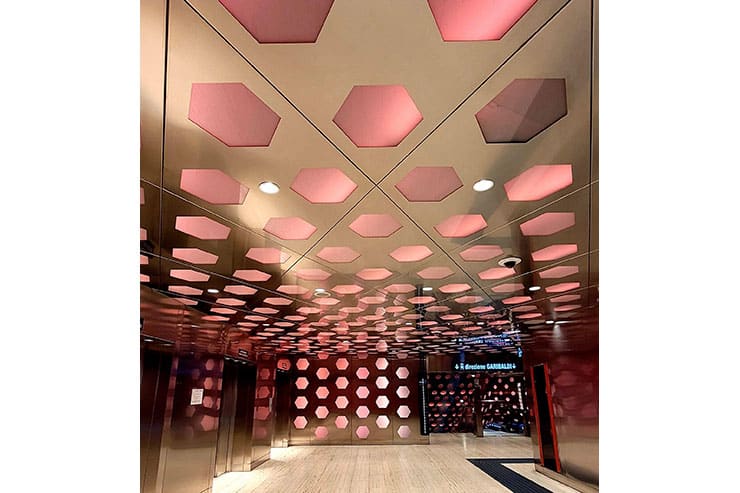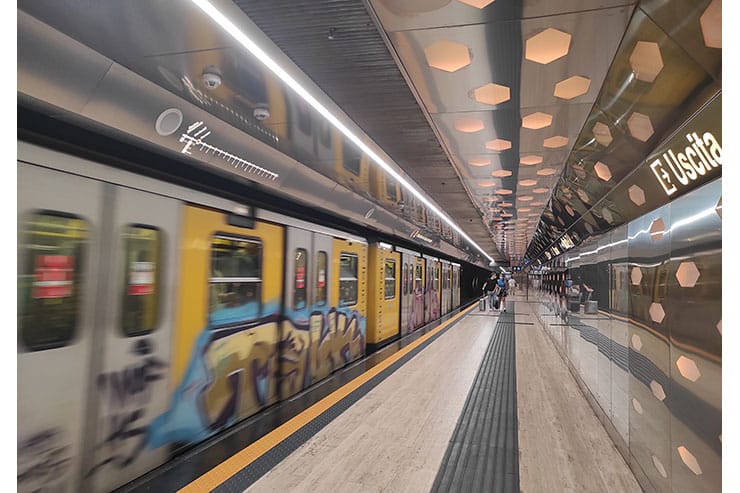- ABOUT
- JUDGING
- CONTACT
- MORE
- 2024 Entries
- Installations 2024
- Past Winners
- Subscribe
- [d]arc directory
- arc magazine
- darc magazine
Naples Metro, Italy
ProjectNaples MetroLocationNaples, ItalyLighting DesignCannata & Partners, ItalyArchitectFuksas Architects, ItalyClientMetropolitane di NapoliLighting SuppliersZumtobelPhotography© @rolandhalbe
The light for the Naples Metro Duomo station designed by the Fuksas architetti firm had to be something unprecedented, that had never been seen in other subway stations and above all, that it would represent an experimentation between light, architecture, space and peoples. The project faced considerable problems from a construction and regulatory point of view, but in the end they were solved after a long discussion with the Metro’s engineers staff, the electrical contractor and other companies involved in carrying out the work.
The panels covering the walls and ceilings of the Duomo Station take the form of a second “skin” of cladding. This skin features numerous hexagonal cuts of different sizes made from steel panels. The architect’s desire is to create an architecture of light that, through a variation in tone and intensity, can retrace the same shades of natural light in real time throughout the day from sunrise to sunset.
This project by means of light and color aims to make the user of the subway a real experience and make them not feel the sense of an underground and closed environment, by re-proposing colors and shades of the sky from dawn to dusk, and still enhancing the identity architecture of the place and its beauty. In this case, light takes on a role as an instrument of communication, of storytelling, it becomes a metaphor of natural light as well as an architectural enhancement.
The goal that light sets itself is to act in sync with natural light by creating a variety of colors starting from the entrance to the station to ending at the platform and involving the traveler in a true true experience. Each floor will be able to have its own color-dependent light that is different in hue.
This result will also provide an opportunity to feel like a dynamic, cheerful and engaging place. An electronic light control system connected to light intensity sensors to an astronomical clock manages the complex network of rgbw LEDs that backlight the panels.
Recessed ceiling downlights with darklight controlled optics ensure the illuminance levels required by regulations. Darklight optics ensure maximum visual comfort.
The design was very elaborate due to the amount of fixtures in the suspended ceiling and thus of the lack of useful space for luminaires. We had to design a system related to the panels that was also useful for future maintenance. Another problem was compliance with current regulations and safety regulations for these particular environments. The lighting system moves the intensities light and colors in long times and very slowly so that the passenger does not notice anything.
The entire lighting system operates at 90 percent light intensity, and the design has guaranteed a life average LED life of 100,000h to ensure the longest possible maintenance.
